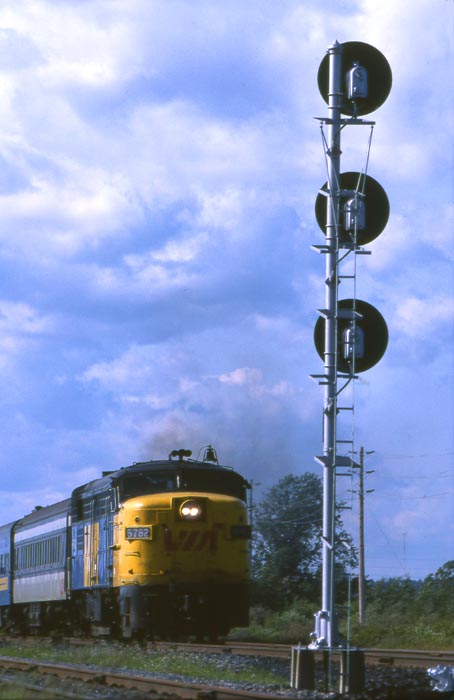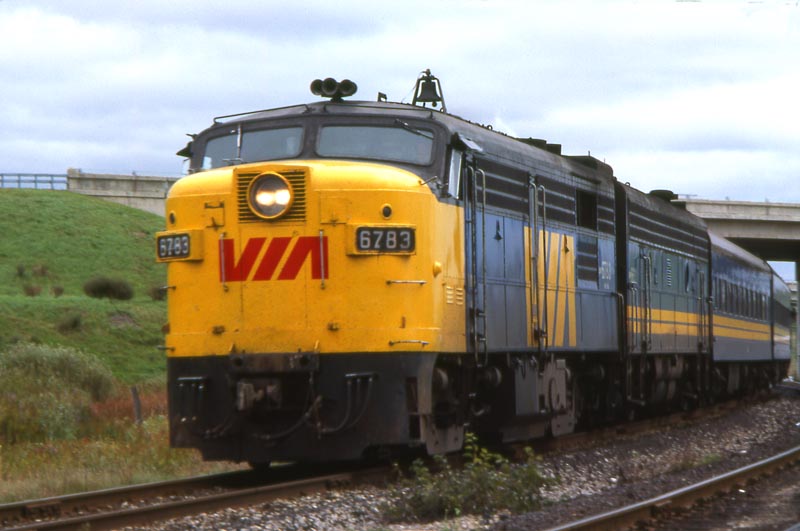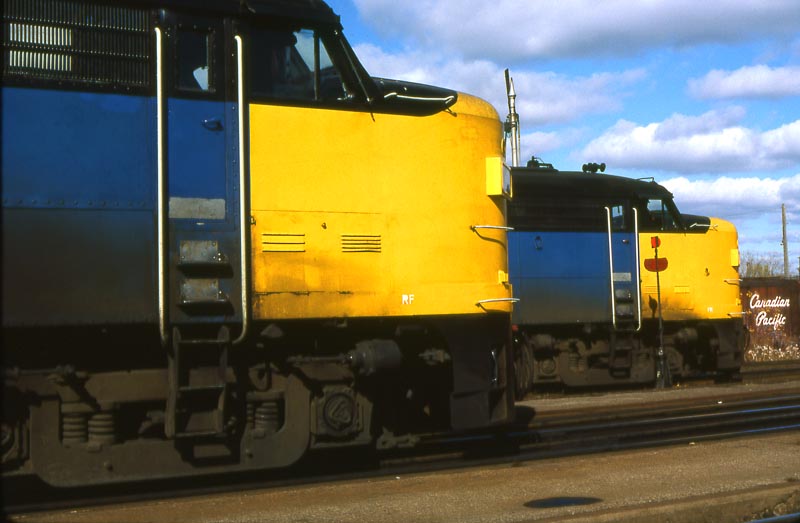
The Demise of the VIA FPA-4s
|
The VIA 6700 series “Alcos”, built by MLW in 1958 and 1959, were acquired from Canadian National. By 1989, VIA had started to retire these handsome units and the Canadian Trackside Guide for that year shows a total of 15 remaining of the original 32. Then, at the end of March 1989, the entire fleet was banned from running in the lead position. This is the story of that event. In the meantime, I had been given the task of writing the Railway Safety Act which became law on January 1, 1989. At that time, railway safety regulation in Canada passed from the National Transportation Agency (formerly the Canadian Transport Commission) to Transport Canada and I became responsible for the program. The Agency staff were also transferred to Transport Canada to ensure continuity. With a new, untested piece of
legislation in place, and a
new Director General as well, the railways (and unions) started probing
and
testing to see where they stood stake out their positions: the RSD was
a good
place to start. The railways, in
general, had done a good job in conversion to RSD - the one exception
was
VIA. The passenger railway had planned
to retire its FPA-4’s before the end of March 1989 with the
introduction of the
final batch of F40 PH-2, 6400 series locomotives. However,
there had been delays in delivery
and so they applied, at the last minute, for an extension of the
deadline. It was quite a performance,
suggesting that
unless we agreed to an extension there would be wholesale cancellation
of
passenger services for an indefinite period. I
pointed out that VIA had known about the deadline for a
long time and
could easily have fitted RSDs to the 6700s.
I went to
Ottawa station with my Director of Equipment and
the Chief of Motive Power. We found a
6700 and took a look inside. The engine
room was awash in oil and the air in the cab was thick with fumes. It was not a pleasant workplace.
Worse, when we tested the Deadman, it didn’t
work at all and the maintenance staff had to scramble to make repairs
to get
the train out on time. VIA FPA-4 6760 leads "The Canadian" into
Ottawa station on Jamuary 6, 1986. In looking at safety matters there are two factors to be considered – risk and consequence. In this case, the risk of an accident from having a Deadman pedal instead of the RSD was quite low. However, the consequence could be disastrous, as the Hinton accident had shown. It might not have been so bad if this were in relation to a low speed freight operation but these units were running at high speed and carrying passengers. The visit to Ottawa station merely confirmed our thinking that units with foot pedals should not be allowed in the lead position, especially on passenger trains. And so the VIA 6700’s were
banned from being in the lead
position on any train in Canada as of March 31, 1989.
The resultant service disruptions were not as
severe as VIA had predicted. A number of
locomotives were hired from the freight railways and, in some cases
timing suffered
because these were only geared for freight train speeds.
 VIA 6782 takes VIA train 36 to Montreal out of Ottawa, past the dead track in Ottawa on July 1, 1982.  VIA 6783 heads up VIA train 31 from Montreal to Ottawa at Hawthorne on September 20, 1981.  |